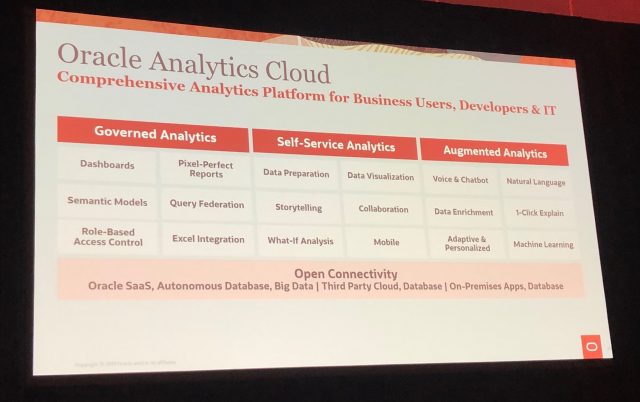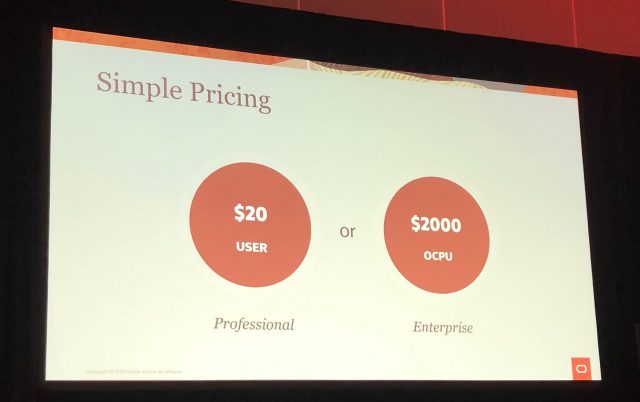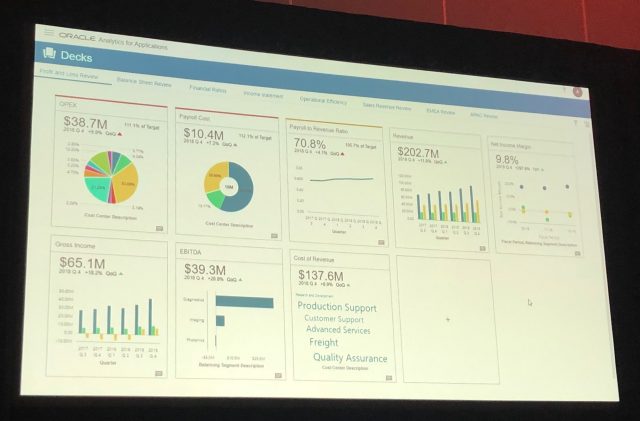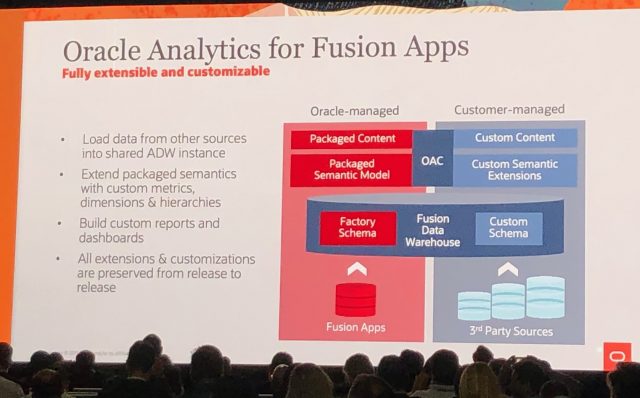Wed Sept 18, Day 3 of #OOW19, included a second keynote from Larry Ellison and of course, many sessions along different tracks. In today’s post regarding Day 3, I will not repeat topics that were covered in the updates for Day 1 and Day 2, although I will cover some different aspects of previous topics.
Here are 5 key updates from Day 3 of Oracle OpenWorld 2019
- In his keynote, Larry Ellison emphasized that the Oracle Analytics Cloud (OAC) platform is a comprehensive analytics platform that includes the following:
-
- Governed Analytics via an enterprise semantic model. This requires some upfront modelling and is great for implementing standards for calculations, metrics, hierarchies and naming.
- Self Service Analytics which requires no modelling for creating visualizations. Just upload a data set or connect to a data source and start exploring and analyzing the data. Self service data preparation is also available.
- Augmented Analytics where machine learning has been applied in the background to make tasks easier and more efficient (voice and chatbot, natural language, 1 click explain, etc)
- Oracle’s simplified pricing for Oracle Analytics Cloud was clarified as below:
- Automated integration from OAC back to the Oracle Cloud SaaS application was introduced as an exciting new feature for customers running OAC and Oracle Cloud SaaS applications. Basically, the way it works is the following:
-
- Let’s say you are analyzing a visualization in OAC and you see that the store in Paris is low on stock of a particular product.
- From directly within OAC, you can jump to the inventory order screen in Oracle’s Cloud SaaS application.
- Relevant information like product codes, store location, etc will automatically be populated in the Oracle SaaS app form from OAC. You can then proceed to order more inventory for the Paris store.
- This integration of analytics back to the transaction processing system for taking action is unique to the Oracle Cloud.
- Oracle Analytics for Applications (OAX) was released with the first module generally available being Financials. OAX will incude ETL, database data model, reporting metadata and key metrics delivered as ‘cards in a deck’. The key metric ‘cards’ will include thresholding based on user-defined targets and will automatically be set up to drill to detail. The photo below gives a glimpse of what the metric ‘cards’ will look like.
- Staying on the topic of Oracle Analytics for Applications (aka Oracle Analytics for Fusion Apps), the picture below gives a good idea of Oracle’s vision of how to extend the Oracle-provided cloud data warehouse that comes with OAX (which will be in autonomous data warehouse) to include non Oracle data sources and become an enterprise data warehouse. In Oracle’s vision, non Oracle data sources will exist in custom schemas within the same autonomous data warehouse instance as the Oracle-delivered OAX schema. The enterprise semantic model delivered by Oracle with OAX (ie the RPD) will then be extended to include the custom schemas with the non Oracle data.







